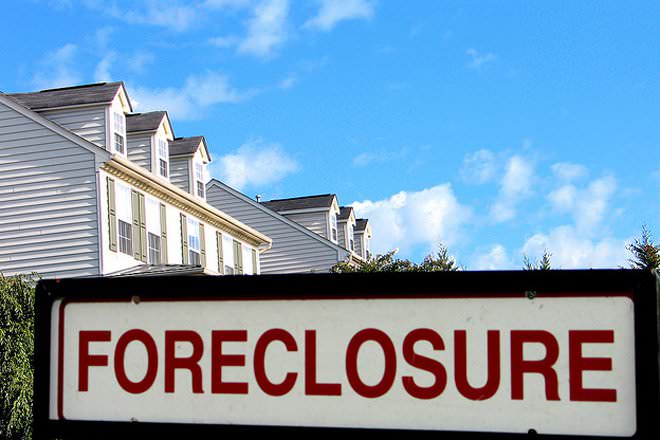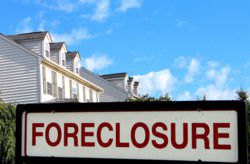In a judicial foreclosure, the lender sues the defaulting borrower in state court in order to auction the property to recoup unpaid debts. In non-judicial foreclosures, the lender auctions the property without having to go to court. Rules regarding which type of foreclosures are allowed vary depending upon the state, with about half of the 50 states using a judicial foreclosure system.
Comparison chart
Process of Foreclosure
The process varies from state to state and can be rapid or lengthy. Alternative options, such as refinancing, temporary arrangements with the lender or bankruptcy, can help homeowners avoid foreclosure.
In judicial foreclosure, the lender must prove that the borrower has defaulted on their loan and pursue court action. If the borrower cannot pay the debt, the property is sold at auction by the county sheriff or another official. The winning bidder receives the deed to the property. The process usually takes between 6 months and 2 years.
As the vast majority of foreclosures are uncontested, the U.S. financial industry has lobbied since the 19th century for non-judicial foreclosure – foreclosure that occurs out of the courts. Non-judicial foreclosure occurs when a mortgage contains a power of sale clause, allowing the lender to initiate a foreclosure sale without going through the courts. The lender issues a notice of default and notifies the borrower of this fact, before conducting an auction of the home. The lender itself can bid in the auction, and the winner receives the deed to the home, although they then might be forced to sue for the eviction of the current residents. The process usually takes between 1 month and 1 year.
Foreclosure rules vary by state
Judicial foreclosure is an available option in all U.S. states except Michigan, New Hampshire, Tennessee, Utah, West Virginia and the District of Columbia.
Non-judicial foreclosures are available in just over half of the US: Alabama, Alaska, Arizona, Arkansas, California, Colorado, Georgia, Hawaii, Idaho, Iowa, Michigan, Minnesota, Mississippi, Missouri, Montana, Nevada, New Hampshire, North Carolina, Oklahoma, Oregon, Rhode Island, South Dakota, Tennessee, Texas, Virginia, Washington, West Virginia, Wisconsin, Wyoming and the District of Columbia.
In states that allow both kinds of foreclosure, non-judicial foreclosure is used if the borrower signed a mortgage including a power of sale clause, which allows the lender to sell the property to recoup unpaid debts. If this clause was not signed, the lender must use judicial foreclosure.
Impact on Housing Recovery
The Mortgage Bankers Association (MBA) and other lending industry organizations tend not to like the judicial foreclosure system because it adds to their costs. In a December 2012 article in the New York Times, the industry argued that recovery in the housing market was slower in states that force lenders to go to court before foreclosing. Judicial foreclosures took more than twice as long in states like New York and New Jersey than the national average. However, the reason for that was not always that the courts were bogged down. Often, lenders and mortgage servicers themselves were overwhelmed with the volume of foreclosures and were unable to gather all the necessary documentation for the courts in time. As of the end of September 2012, according to the MBA, 6.6% of all loans were in foreclosure in judicial states, compared with 2.4% in nonjudicial states. The MBA has blamed this on a "sluggish" process in judicial foreclosure states for a backlog in foreclosures.
Preventing Foreclosures
A 2011 study compared states that require lenders to seek judicial permission to foreclose with states that do not. The study found that:
Borrowers in judicial states are no more likely to cure and no more likely to renegotiate their loans, but the delays lead to a build-up in these states of persistently delinquent borrowers, the vast majority of whom eventually lose their homes. found that avoiding foreclosure was no more likely for borrowers subject to either judicial foreclosure, or laws forcing lenders to wait 90 days before beginning foreclosure proceedings, than it was for other borrowers.
Books and Videos on Foreclosure
This is a list of useful, popular books and videos about foreclosures on Amazon.com:
- 23 Legal Defenses To Foreclosure
- The Complete Guide to Locating, Negotiating, and Buying Real Estate Foreclosures
- The Complete Idiot's Guide to Buying Foreclosures
- The Pre-Foreclosure Property Investor's Kit: How to Make Money Buying Distressed Real Estate -- Before the Public Auction
Foreclosure stats
- the top states for foreclosure rates in August 2022 were Illinois, Delaware and South Carolina.
- California had the most foreclosure filings (4,241); Vermont had the least (3).
References
- Foreclosure - Wikipedia
- Avoiding foreclosure - United States Department of Housing and Urban Development
- Talk to a Housing Counselor - United States Department of Housing and Urban Development
- Foreclosure scams
- Homeowner Assistance Fund - U.S. Department of the Treasury
- Judicial Foreclosure & Nonjudicial Foreclosure | Real Estate Exam - YouTube





 Foreclosure
Foreclosure  Chapter 7
Chapter 7  Foreclosure
Foreclosure  Deed of Trust
Deed of Trust  Chapter 11
Chapter 11  Fixed
Fixed
Comments: Judicial Foreclosure vs Non-Judicial Foreclosure